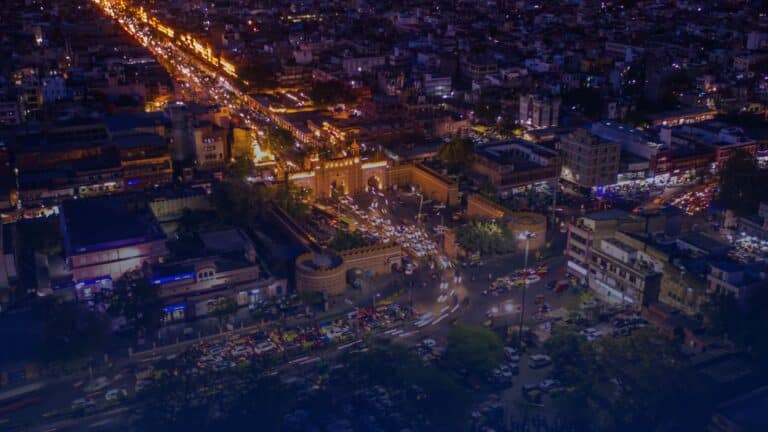This website uses cookies as well as similar tools and technologies to understand visitors’ experiences. By continuing to use this website, you consent to Columbia University’s usage of cookies and similar technologies, in accordance with the Columbia University Website Cookie Notice.
Guest
Decarbonizing Cars
-
Transcript
-
Tim Trooper: [00:00:00] If I have to even make a single stop to trickle charge in the Yukon, there’s no way that I’m going to be able to cross it in 24 hours. [00:00:07][7.3]
Melissa Lott: [00:00:08] A trickle charge. It’s a funny term for charging your electric vehicle on the slowest charging speed, basically using a standard wall outlet. And it’s a strange thing to be worried about because when I think about the biggest obstacles to a cross-country road trip, it’s like finding a hotel room for the night. Who gets to deejay and do I have enough snacks? What you don’t expect on a standard road trip is running out of charge and failing to make it across the Yukon in 24 hours, which in this case could have gotten Tim Trooper arrested by the Royal Canadian Mounted Police. [00:00:36][28.8]
Tim Trooper: [00:00:37] I’m going to get arrested. I’m going to get thrown in jail. The Mounties are going to come after me. [00:00:41][3.5]
Melissa Lott: [00:00:43] To explain how Tim found himself on this very not normal road trip racing through the Yukon. We have to back up a bit and we’ll return to this in a moment. But you can trace Tim’s story back to a few years earlier when he decided to buy a new car an EV. [00:00:56][13.1]
Tim Trooper: [00:00:56] I really think that they’re the cars of the future. I think it makes a lot of sense for fighting climate change to electrify our vehicle fleet, and I wanted to be an early adopter. [00:01:05][8.3]
Melissa Lott: [00:01:05] He also really wanted to put EVs to the test. [00:01:07][2.0]
Tim Trooper: [00:01:08] I’ve always sort of had it on the back of my mind that I would love to do a long distance road trip in any view, and it just seemed like a great adventure early. [00:01:16][7.6]
Melissa Lott: [00:01:16] In the pandemic. Tim was living in Vermont, but he was about to move to Alaska, where he grew up, and the move presented an opportunity. [00:01:22][5.8]
Tim Trooper: [00:01:23] My car was in Vermont. I wanted to be in Alaska. I wanted to have my car in Alaska, as simple as that. [00:01:28][4.8]
Melissa Lott: [00:01:28] So Tim decided to drive across the country 7600 miles from Vermont, all the way to Alaska. Driving that far in a normal car during a pandemic was already a challenge, but an EV that makes it far more complicated. [00:01:41][12.7]
Tim Trooper: [00:01:42] It’s still kind of the Wild West in terms of like the infrastructure that’s out there. [00:01:45][3.2]
Melissa Lott: [00:01:48] This is the big switch, a show about how to rebuild the energy systems that are all around us. To slow climate change, we need to transform our buildings, homes, cars and the economy as quickly as possible. But how do we do it? Right? I’m Dr. Melissa Lott, and I’m the director of research at Columbia University’s Center on Global Energy Policy. And I study the technologies and systems that power our world. In the next five episodes, we’re going to do a deep dive into decarbonizing the entire transportation sector, everything from bulldozers and planes to ships and trains. And today we start with cars. So back to Tim. In June of 2020, he had packed up his entire Vermont apartment into a 2019 Chevy Bolt. Tim loved his bolt. [00:02:38][50.3]
Tim Trooper: [00:02:38] The 2019 Chevy Bolt has a £960 lithium ion battery. In terms of energy storage, that’s enough to store about the same amount of energy that you get in two gallons of gasoline. But electric cars are just so much more efficient and electric motors are so much more efficient. [00:02:53][14.7]
Melissa Lott: [00:02:54] When Tim says electric cars are way more efficient, let me put it to you this way. In an internal combustion car, we are literally blowing up fuel inside of an engine to move thousands of parts inside our drive train to move us down the road. But in an electric car, we’re using virtually all the batteries energy. Just move around 20 parts. What this means is that a Chevy Bolts battery might only hold two gallons of gasoline worth of energy, but it can go an EPA rated 238 miles. Talk about miles per gallon. That’s 4 to 5 times the average internal combustion engine vehicle. The thing is, Tim was about to drive 7600 miles. [00:03:28][34.8]
Tim Trooper: [00:03:29] When I left on this trip, I was all my friends thought I was crazy. And I kind of thought I was crazy, too. I was giving myself maybe a 50% chance of making it without major incident. [00:03:39][9.5]
Melissa Lott: [00:03:39] Although EV batteries carry less energy than a standard tank of gas, the real technology that Tim was putting to the test was charging infrastructure. Just like most of our cars today and gas stations, electric vehicles need chargers. And there are three types. The first is the same outlet that you plug your microwave into. [00:03:55][16.0]
Tim Trooper: [00:03:56] Most of the charging that I do is just plugging into a standard wall outlet at home. It’s called trickle charging or level one charging, and it doesn’t give you a ton of range, maybe like 2 to 3 miles of range per hour plugged in. But if you’re just doing local commuting, it’s enough for most people. [00:04:11][15.2]
Melissa Lott: [00:04:12] Then there are level two chargers, which you might find in parking lots or apartment complexes and sometimes in people’s homes. [00:04:18][5.6]
Tim Trooper: [00:04:18] They’re often ones that are free or cheap, and that’s more like, you know, 20 to 30 miles of range per hour. So, you know, if I’m out shopping at the grocery store, I can plug in for an hour and get a nice little chunk of charge. [00:04:29][10.6]
Melissa Lott: [00:04:29] And finally, level three Chargers or Superchargers. These are fast. [00:04:33][3.6]
Tim Trooper: [00:04:34] You can get, you know, up to 50% of your battery charged up for me in like 30 minutes. But that also depends a lot on what kind of car you’re driving and what kind of supercharger it is. [00:04:43][9.4]
Melissa Lott: [00:04:44] Gas stations are everywhere. And if a gasoline car had only a few hundred miles of range, it wouldn’t be a big problem for the vast majority of trips. You can always find a pump to fill up. But charging stations, not so much, at least not yet. So to make it from Vermont to Alaska, an EV, Tim had some planning that he needed to do. He couldn’t go straight through New York, to Canada, to Alaska. Because of the pandemic. Canada was turning people away at the border, although Tim did hear that he had a chance of crossing the border if he went further west. But he also couldn’t go through the Great Plains because they didn’t have many EV chargers. So Tim ended up having to take an even longer route through Kansas, Colorado and Utah, where there’s a network of Superchargers before heading up to Canada. But he was still going to pass through areas without much charging infrastructure. So Tim began to research, taking special note of one particular type of stop RV parks which have chargers for RVs. But EV drivers can use them as long as they have the right plug. [00:05:40][56.7]
Tim Trooper: [00:05:41] I built a spreadsheet with every single RV park on these charger list stretches of Canada and Alaska, and for each one I had to figure out where they closed because of the pandemic. What kind of charging infrastructure do they have? And I did a lot of calling to make sure these places were actually information about them online was open. [00:06:02][20.9]
Melissa Lott: [00:06:02] And so he took his spreadsheets and hit the road in June. And for the first month, things went pretty well, if a little bit awkward sometimes. Many car dealerships have Superchargers, so he spent a lot of time sheepishly waiting around outside of them, trying to see if he could charge up. And he also spent a lot of time at Walmarts, which often have chargers. And aside from a few close calls, driving an EV across America was turning out to be doable if you planned it right. And as he drove into Montana and approached the long stretches of the charger, Louis Yukon, he was armed with his meticulously researched RV spreadsheet. [00:06:33][30.3]
Tim Trooper: [00:06:33] But even that turned out to not be quite enough. [00:06:35][2.0]
Melissa Lott: [00:06:38] At the US Canada border and an officer of the Royal Canadian Mounted Police, a.k.a. the Mounties, sternly explained to him that Canada’s Yukon Territory, which he would be crossing to get to Alaska, had a new rule, and that rule was going to make his trip a lot harder. [00:06:53][14.8]
Tim Trooper: [00:06:54] People driving to Alaska were only given 24 hours to cross the Yukon. The stretch of the Alaska Highway through the Yukon is more than 500 miles. So to drive it in 24 hours in an electric car is no easy task. And there’s only one EV charger along the route. [00:07:12][18.4]
Melissa Lott: [00:07:13] 500 miles, 24 hours. One charging station. What could go wrong? [00:07:18][5.1]
Tim Trooper: [00:07:18] So the first thing that happened when I crossed the Yukon is I went to this RV park where I thought I was going to be able to access a 50 amp charger. [00:07:26][7.1]
Melissa Lott: [00:07:26] A 50 amp charger is like the functional. Equivalent of a level two EV charger. As long as you have the right plugs. [00:07:32][5.9]
Tim Trooper: [00:07:33] They had advertised it online. They advertised it on their sign on the highway. And when I got there and I asked them about it, they said, Oh, no, we haven’t turned on that system. You can’t use any of the 50 AMP Chargers. We’re sorry. And so I thought, I’m screwed. There’s no way that I’m going to be able to cross it in 24 hours. [00:07:53][19.7]
Melissa Lott: [00:07:59] So most of us aren’t driving our cars across two countries. The fact that Tim could drive across the US in an EV shows how far the charging infrastructure has actually come. But Tim situation in the Yukon, which we’re going to come back to, brings us to a question. How is our EV infrastructure going to evolve to enable a big switch around the world from internal combustion engines to electric motors? And how do we make sure it happens fast in time to slow climate change? [00:08:23][24.0]
Tim Trooper: [00:08:24] We’re in the early days of EV infrastructure. We’re basically all out there driving model T Fords around trying to figure out, you know what, this whole gas station business is about. [00:08:34][10.2]
Melissa Lott: [00:08:34] To figure out what it’s going to take to build up a system that can support zero carbon personal vehicles. I turn to a transportation expert, someone who also happens to be very attached to her own car. [00:08:44][9.1]
Sonia Yeh: [00:08:44] I shipped my car from California to Sweden because I’m kind of attached to my car. [00:08:50][5.5]
Melissa Lott: [00:08:50] When Sonia moved to Sweden, she brought her hybrid with her. [00:08:53][2.9]
Sonia Yeh: [00:08:54] It was March 2011 when Fukushima Daiichi nuclear disaster happened. So that car was the last car on the on the parking lot because Japan basically lost one third of their power. They shut down all the nuclear plants. They weren’t able to deliver any new cars for a couple of months. So I basically grabbed the last car. I love it. I really love that car. [00:09:19][24.8]
Melissa Lott: [00:09:20] Sonya is a professor in Transport and Energy Systems at Chalmers University in Sweden. She studies how societies learn and adapt to new transportation technologies. We started out by talking about the very basic facts around cars. Do you know about. I mean, how many cars are there in the world right now? Are we talking millions? Billions? Trillions? I mean, how many cars are there around the world? [00:09:42][22.8]
Sonia Yeh: [00:09:43] Yeah. Right now? Well, in 2015, we had about 1 billion cars and it’s projected that we’ll probably get to 2 billion cars by 2040. And the new car sells. Right now, it’s about 71 million per year. And one third of that, about 20 million come from China. [00:10:05][21.8]
Melissa Lott: [00:10:06] At the highest level. Like, we’re just going to zoom up and be on top of these billions of cars. What is it going to take to decarbonize our personal vehicles So the cars and small trucks that we park at our homes and drive ourselves each day? What can we do to get to net zero with them? [00:10:24][18.3]
Sonia Yeh: [00:10:24] I mean, currently there are several solutions. One is to use more biofuels, which is, you know, using some kind of bio based products. Either it’s big corn ethanol or soybeans as a first generation or or what we call it, but biofuels that are produced from cellulosic materials because they don’t directly compete with food. But we can also electrified our personal vehicles, electric vehicles, either pure, high, pure electric or hybrid electric. Then there are other options. They natural gas vehicles, methanol cars or hydrogen fuel cell vehicles. So those are the different options. And of course, we can talk a little bit more about what options are more likely. [00:11:09][44.2]
Melissa Lott: [00:11:10] I know I’ve heard you speak about, I think what you term three big revolutions when it comes to transportation. Can you step through what those three buckets are and and talk about I mean, what are they and what do they mean for the future of transportation? [00:11:23][13.3]
Sonia Yeh: [00:11:24] Little photon I UC Davis basically popularized this term three revolutions which basically is the electrification and autonomous vehicles and mobility as a service. And electrification is using electricity in cars instead of fossil fuel. But you can also look at a broader other modes of transportation. I know we talk mostly personal vehicles, but we can also electrify trucks, even long haul trucks or marine shipping aviation and in trains. So that’s electrification. And then the second one is autonomous vehicles. And that would be where a more laymen term would be self-driving cars. But again, you can also apply that concept and in that concept is probably adapted to faster in other modes. See also apply for other modes like busses, trucks, Airplanes has been in autopilot for a long time. Ships and off road vehicles like mining equipments and so on and so forth. And then last one is mobility of service, which is like Uber or Lyft, where car sharing, bike sharing, e-scooters. Those are the third category. [00:12:46][82.0]
Melissa Lott: [00:12:47] Why don’t we have a lot of EVs on the road right now? And within that, like if we wanted to have a lot more in the future in a net zero world, what do we need to do to support just. Widespread use of electric vehicles. [00:13:00][12.5]
Sonia Yeh: [00:13:01] That’s a very good question. And there are two challenges with electrification. One is the cost of the technology, particularly the cost of batteries. And the second one is infrastructure, because the batteries tend to be heavy and they tend to have lower, shorter ranges than gasoline diesel vehicles that we’re used to. You need to have infrastructure for people to charge their vehicles probably more frequently than they’re used to and a little bit longer than they’re used to. So those are two challenges associated with EVs, more expensive cars and different way of using infrastructure to charge your vehicles. [00:13:42][41.3]
Melissa Lott: [00:13:43] I’m trying to picture what that different process looks like when we talk about going to a gasoline or diesel pump and, you know, filling our tank versus charging our electric vehicle in the future. Can you talk to me about the differences between, you know, what those two processes look like charging versus filling your. [00:14:02][18.8]
Sonia Yeh: [00:14:02] Tank when you drive an EV? Of course, EV can be pure hybrid electric or it can be a plug in hybrid electric. Plug in means that you have smaller batteries, but if you run out of batteries, then you can reveal your cars at a refueling station. But for pure electric battery vehicles, you have to charge them while the car is not moving. The the way we think about refueling your charging your electric vehicles, you don’t necessarily go to charge fueling stations. You can charge your car at home or you can charge your car at work. You can charge your car while you’re shopping, grocery shopping, or at a coffee shop. So there are many, many different options. So and some people see them as negative because it changed the way we’re used to. Some people see them as positive because instead of driving to a pump stations to pump, you pump the gas, you basically when you park at home, your car will get refueled. [00:15:05][62.7]
Melissa Lott: [00:15:06] If we said, you know what, magic wand, every single vehicle, the souls from right now on is an electric vehicle. How long would it be until all the cars on the road would be an electric vehicle? Approximately. [00:15:18][12.3]
Sonia Yeh: [00:15:19] Right. So on average, we kind of assume an average lifetime in a vehicle is about 15 years. So that means that every year about 7% of vehicles will be retired and go into either secondhand market or shipped to other countries. That’s kind of another side of the story. But they will be retired from the fleet. So if you use that rate approximate, you would take about 15 to 17 years to replace that entire fleet to the new vehicles. So if 100% of vehicles are already sold as electric vehicle today. [00:15:59][39.5]
Melissa Lott: [00:16:00] So when we say 15 to 17 years, is that fast enough if we want to reach net zero one to meet these Paris Agreement targets we talk about and we read about in the news is 15 to 17 years is fast enough. [00:16:12][12.6]
Sonia Yeh: [00:16:13] Right. And when I say 15 to 17 years means that from today all the vehicles will need to be electric. And we know it’s not going to happen right now. Probably the high share is in Norway, about 70%, which is very good in the U.S. It’s and other places are far less. So that means that the pace of reducing car emissions is is going to take much longer than that. Is that fast enough? Probably not if we want to be. But if we want to achieve net zero by 2030 or 2040. [00:16:50][37.1]
Melissa Lott: [00:16:51] So electric vehicles, you commented on how they’re expensive right now. And I’m thinking even in Europe and the US where we’ve got a lot of infrastructure and relatively wealthy in developed countries, do we see a future where actually electric vehicles become accessible to people who don’t have, you know, an extra $10,000 or €10,000 or pounds or whatever currency just sitting in their pocket ready to spend? [00:17:14][22.9]
Sonia Yeh: [00:17:15] Great. That’s a very good question and very good question for me to make a little bit clarification in terms of when I say electric vehicles are expensive today. It’s mostly on the batteries. And so but the experts expect the batteries costs are going to come down really fast to a level that’s comparable to gassing cars very soon. That’s on the kind of the purchase price. And at the same time, electric vehicles actually are much cheaper to operate. So means that they’re cheaper than gasoline. When you go when you refill your car, they are actually depending on which state you’re in. You can be one third to a quarter cheaper than gasoline. So. There is this train of Yeah that’s actually again so nice trade out because you you we no longer need to live in a world where gas prices affect kind of every aspect of our life. We pay more when gas prices are high. So that’s a very good thing to also keep in mind, I think there’s definitely a lot of opportunities for people to afford those cars and I can certainly imagine there’ll be more charging stations. You see more and more charging stations everywhere outside of a Starbucks, for example, or at your workplaces and homes where on the streets some apartment buildings have charging stations. So charging stations will become more and more affordable and that those will help the adoption of electric vehicles there become in there technology people see and use every day. And I think that it’s definitely a lot more accessible for the majority of the population. [00:18:55][100.6]
Melissa Lott: [00:18:57] When you talk about autonomous vehicles, I know you mentioned that autonomous vehicles. I mean, we’ve had autonomous planes basically sell flying planes for a long time. But when we talk about it for our personal vehicles, for our cars, I mean, how does that affect the decarbonization of our cars? And also, I’ve heard you say the phrase autonomous vehicles, or that could be heaven or hell when it comes to the future of our own personal transport, our own personal mobility. What do you mean by that? [00:19:22][25.4]
Sonia Yeh: [00:19:23] When we talk about autonomous vehicles, it’s important to keep in mind that they don’t necessarily to decarbonization by itself because there are many different company, different ways of using autonomous vehicles, thinking about autonomous vehicles being shared, or they’re part of this other revolution that I talk about, mobility of service. So they are fleet owned by companies that are probably electrified. A shared interest pick you up for a particular trip or they can be sort of like public transportation where they just take you from your home to the nearest bus stop and put you on public transportation, because that’s more efficient way of moving people and lower carbon. So there’s there’s a lot of uncertainty of how people will use autonomous cars in the future, either like the house scenario where every single private cars are self-driving cars and we use it to as our personal chauffeur that we eat in the car, work in the car and hang out with friends in the car and just drastically increase the demand. That would be kind of their health scenario or they would be kind of heaven scenario where all the autonomous cars are shared with many people and are owned by a fleet and they’re electrified and connected. So that would be the heaven scenario where that the mode of usage has more potential to reduce drastically reduce carbon emissions. So that’s the important thing we want to kind of understand. And it’s also very hard to predict how the future will evolve because I think this is a trend that’s driven by consumers preferences and we don’t fully understand the consumer preference, how people use their future vehicles at this point. [00:21:21][118.4]
Melissa Lott: [00:21:22] Yeah, I think I remember I think it was Dave Turk when he was at the International Energy Agency. Now he’s in the U.S. Department of Energy. But I remember him saying autonomous vehicles. Well, they could lead to a 50% decrease in demand or they could lead demand to double. You know, and this is this is what you were talking about with having now, like, that’s a really big different future. And at the heart of the difference in the numbers is how people behave, the choices that we make and also how the systems are just designed to be integrated or not, which is what you just said. We’ve got electrification, we’ve got autonomous vehicles and we’ve got mobility as a service. How do these three things work together when it comes to a net zero future? [00:22:01][38.5]
Sonia Yeh: [00:22:01] Right. That’s a really excellent question. And the question most excited is very, of course. And so with these three revolution, if I may, I would also add another category, which is artificial intelligence, digitalization that’s happening in all the sectors that are also changing technologies. And so this would these three or four revolutions, they need to work together to help us achieve that decarbonization goal. We talk about heaven and hell scenario. The whole scenario would be these three revolution kind of work in different directions, that limited use of electrification and people have the perception of, if I drive an electric vehicle car, I’m saving the environment. Therefore, you’ve probably seen this Hummer. [00:22:54][52.9]
Melissa Lott: [00:22:56] The Hummer, that commercial. [00:22:57][1.4]
Sonia Yeh: [00:22:58] Marshall Right. So you lead to more demand and more driving. Then you drive a huge giant machine to pick up your kids or drive to work where you don’t really need that big cars. And so that’s the ID you can lead to wrong perception of you’re doing good for the environment but induce more demands, unnecessary demand. And same for a mobility of a service that people could also increase, use, increase their demand for autonomous vehicle. We also talk about it. The best combination would be these three revolutions work together where the future mobility would be electrified and shared, and that will lead to the best opportunity to decarbonize the transportation sector, particularly in personal transport. [00:23:51][53.0]
Melissa Lott: [00:23:52] Here’s the thing we haven’t talked about with cars. They’re really just one part of a much bigger set of transportation solutions. When I asked Sonia what she was most hopeful about when she pictured a zero carbon future, it actually had a whole lot less to do with owning a personal vehicle. [00:24:07][15.4]
Sonia Yeh: [00:24:08] I know this is a little bit cheesy because I work in transportation, but when we move from California to Sweden, in Gothenburg and you know, after two or three years, my kids have a chance to settle down. And I asked them, what was the biggest difference for you? And they thought about it for a while and they say transportation, and they say because it means freedom to them in California, they can’t drive. So they’re like birds in a golden cage. They need to be transported. They need to wait until I’m available to take them to sports practice, to meet with friends, to go shopping. But here they just hop to transport public transportation. They take the bus, they can come home at 12:00 at night and it’s totally safe. Yeah, it means freedom for them. And I think that’s really, really great. And that makes me hopeful and it keeps me going. [00:25:12][63.9]
Melissa Lott: [00:25:17] And this is what we’re going to talk about more in future episodes. How can we give people more transportation options so they don’t have to rely so heavily on cars to live their lives and get to places? Sometimes we really do need cars. Say, for example, you’re moving from Vermont to Alaska. If you’re Tim True or racing across the Yukon and EV trying desperately to reach Alaska within 24 hours. You also need a fast charging station. Tim thought he’d find one at an RV park. But the one charger that the park advertised, it didn’t exist. But Tim is resourceful. He starred as a map of the other RV parks in the region. So he kept looking and he backtrack to another RV park. And he met the owner who just happened to be an electrical engineer. [00:25:55][38.6]
Tim Trooper: [00:25:56] He taught me this really, really valuable trick for EV drivers that are trying to drive through remote areas and that’s that you can use a certain type of splitter that lets you plug into two different either wall outlets or in this case, 30 amp plugs at the same time. [00:26:13][16.8]
Melissa Lott: [00:26:14] Basically, you can trick a car into thinking that it’s plugged into a regular Level two charger. That RV map that he had made all those weeks ago, plus this new trick would be his key to crossing the Yukon. [00:26:24][10.1]
Tim Trooper: [00:26:25] Gosh, it felt like the heavens had opened up and this bright light had come shining down. And, you know, the angels were playing music on their little harps. Like it was this incredible moment of salvation that I thought I was totally screwed. And then all of a sudden it just clicked. And in an instant I was like, Wow, okay, no, I can’t actually do this. I’m not going to get arrested. This is amazing. [00:26:46][20.9]
Melissa Lott: [00:26:51] And he did make it. Tim Cross the Yukon and finally the Alaska state line, making it home after five weeks. [00:26:56][5.5]
Tim Trooper: [00:26:57] The only downside to getting back to Alaska is that, you know, I thought I thought that Yukon I thought northern British Columbia had been bad for charging infrastructure. Alaska was way worse. [00:27:07][9.7]
Melissa Lott: [00:27:08] People often associate EVs with urban environments, but the truth is that there are much more versatile technology. [00:27:13][5.3]
Tim Trooper: [00:27:14] You know, it’s a shame because I think I think electric cars actually have a lot to offer a place like Alaska. You know, everybody has a cabin or has access to a cabin or knows somebody that has a cabin that’s off the grid and with a little bit of hacking, it’s not not actually that tough to turn an EV into a mobile battery source. So, you know, if you have a blackout or if you’re, you know, in a cabin off the grid, you can you can actually turn your car into a battery that can power power the home. [00:27:41][27.2]
Melissa Lott: [00:27:42] Alaskan cities also get these terrible cold inversions that trap air pollution like emissions from tailpipes close to the ground, like a fog which can threaten people’s lungs and respiratory system and hearts. Zero emission EVs would help clean up this kind of air pollution. And as if chargers pop up around the world and more EVs roll onto the roads, this future is not far off. [00:28:00][18.7]
Tim Trooper: [00:28:02] Things are only getting easier from here. And on the one hand, it’s like, I’m glad that I got to be an early adopter and I got to experience kind of this wild last model T four days of driving EVs. But I look forward to the day when we when it’s, you know, as easy to take your EV from home and and you’ll have chargers fast chargers along the way that’ll get you to your destination and I think we’re getting there. [00:28:24][22.3]
Melissa Lott: [00:28:26] And that’s our show. Next up on the big switch, public transportation. We’ll talk about the role of public transportation in decarbonizing the transportation sector. Are you using the show in a classroom? Are you sharing it with other energy nodes? Let us know. Tweet me at Missy Elliott and share the show on social media or give us a rating on Apple Podcasts. It really helps other people learn about the show. The Big Switch is produced by Columbia University’s Center on Global Energy Policy in partnership with Postscript Media. This episode was produced by Daniel Waldorf and Alexandria Herr, a special thanks to our Columbia team Curson, Smith Conley, Liz Smith, and Natalie Volk. Our executive editor is Steven Lacy. I’m Dr. Melissa BLOCK. And this is the big switch. [00:28:26][0.0]
[1630.8]
In the next five episodes, we’ll take a deep dive into decarbonizing the entire transportation sector — everything from bulldozers and planes to ships and trains.
In this episode we start with cars. How do we switch the world’s over 1 billion fossil-fuel-powered cars to zero-carbon alternatives, and fast?
Dr. Melissa Lott explores the most promising pathway — electrification — with Dr. Sonia Yeh of Chalmers University. What kind of infrastructure and technology do we need to scale up electric cars? And why aren’t there more electric vehicles on the roads right now?
We’ll also tell the story of Tim Treuer, who put his EV to the test on 7,600-mile road trip, risking jail time in the process.
Guests: Tim Treuer, a biologist, journalist and cross-country EV adventurer. Dr. Sonia Yeh is Professor in Transport and Energy Systems in the Department of Space, Earth and Environment at Chalmer University in Gothenburg, Sweden.
The Big Switch is produced by Columbia University’s Center on Global Energy Policy in partnership with Post Script Media. This episode was produced by Daniel Woldorff and Alexandria Herr. Theme music and mixing by Sean Marquand. A special thanks to Natalie Volk, Kirsten Smith and Kyu Lee. Our executive editor was Stephen Lacey.
More Episodes
The Battery Recycling Dilemma
So far over this season we've traced the global lithium-ion battery supply chain from mining to processing to manufacturing. And we've put it all into a geopolitical and economic context.

The Great Battery Manufacturing Race
China has been the world's biggest battery manufacturer for over a decade. By 2022, according to the IEA, China manufactured 76% of the world's batteries. But that's changing.

The High Stakes for Battery Ingredients
Batteries can replace gasoline in our cars, or diesel in our generators with electricity. But batteries and petroleum-based fuels share something in common: they both rely on energy-intensive processes to turn extracted materials into something useful.

The Mining Conundrum For Critical Minerals
To produce enough batteries to reach global net-zero goals, the International Energy Agency says we'll need to increase production of critical minerals by six fold by 2040. It's a monumental task.
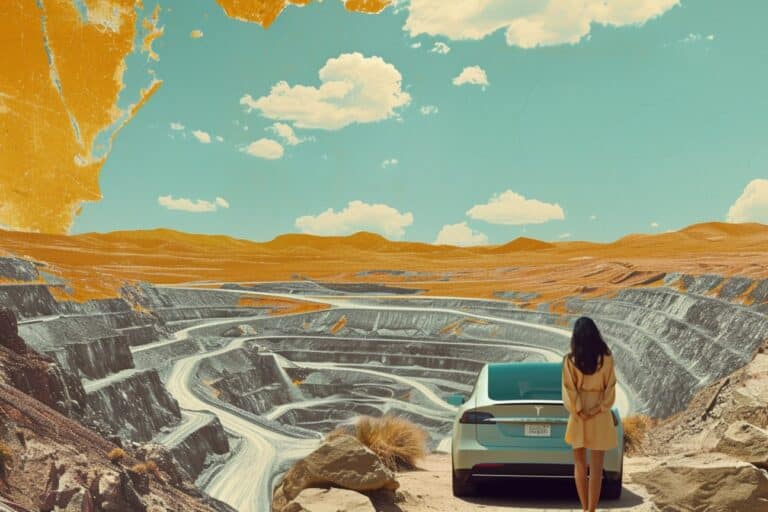
Relevant
Publications
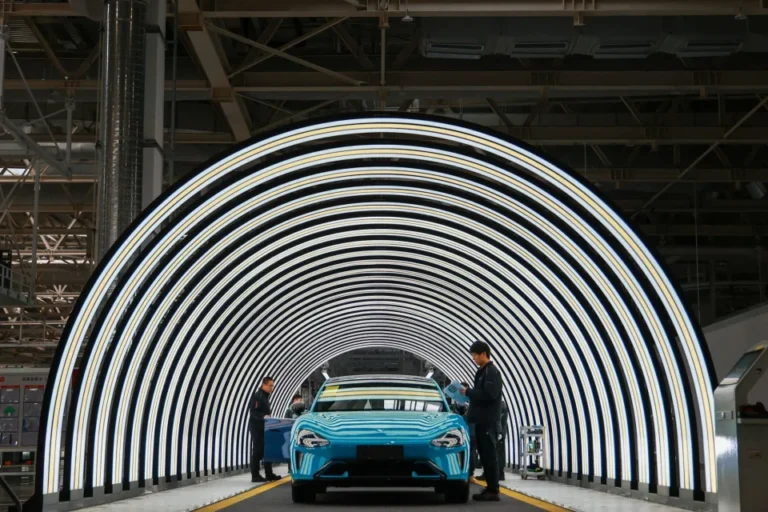
Engaging Consumers in Reducing Critical Mineral Intensity of E-Mobility: A Research Agenda
Electric vehicle (EV) batteries are a major source of critical mineral (CM) demand.
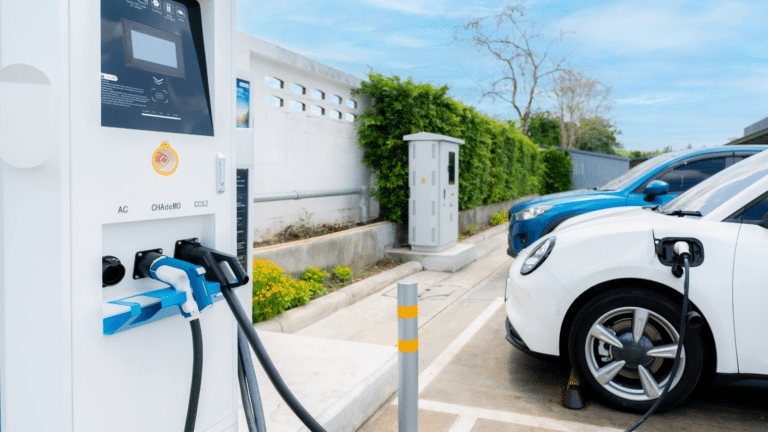
China Hawks Are Putting the Green Transition at Risk
The Biden Administration's new foreign entity of concern rule on critical minerals excludes Chinese sources, posing challenges for the U.S. energy transition.
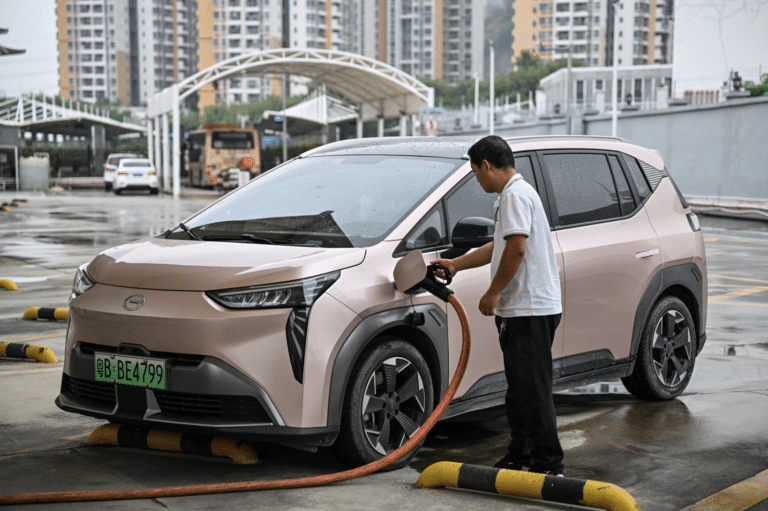
Columbia India Energy Dialogue: Event Report
On September 18, 2023, the India Program at the Center on Global Energy Policy at Columbia University SIPA held its flagship event, the Columbia India Energy Dialogue.
